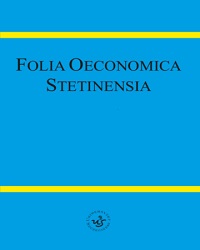A Comparison of Variables Selection Methods and Their Sequential Application: A Case Study of the Bankruptcy of Polish Companies
A Comparison of Variables Selection Methods and Their Sequential Application: A Case Study of the Bankruptcy of Polish Companies
Author(s): Mikhail ZankaSubject(s): National Economy, Business Economy / Management, Micro-Economics, Methodology and research technology, Policy, planning, forecast and speculation
Published by: Wydawnictwo Naukowe Uniwersytetu Szczecińskiego
Keywords: Variable Selection; Ensemble Models; Bayesian Model Averaging; LASSO; Bankruptcy Prediction;
Summary/Abstract: Research background: Even though in recent decades, a lot of new techniques were developed, there is still a lack of studies aimed at comparing the performance of variable selection methods. Bankruptcy prediction is an excellent example of the conservative research field with the tendency to use classical approaches. Although the results of studies in this field are directly applied in banks and other financial institutions, variables selected for these models can be biased by the author’s preference for one technique. Purpose: This work aims to compare different variable selection approaches and introduce a new methodology of sequential variable selection that can be applied when the low-dimensional model is preferred. Research methodology: This study has been conducted on Polish companies’ insolvency data from the period of 2007–2013. The risk has been modeled with logistic regression; hence variables have been selected with approaches suitable for linear models. Results: The one-step methods did not lead to sufficient dimensionality reduction, while the sequential approach provided compact models keeping the high-performance level. Also, this method allowed us to identify the main financial determinants of insolvency for studied companies, which are the volume of total assets and the ratio of profit to total assets. Novelty: This paper compares different variable selection methods and demonstrates the effectiveness of their sequential application for dimensionality reduction.
Journal: Folia Oeconomica Stetinensia
- Issue Year: 20/2020
- Issue No: 1
- Page Range: 531-543
- Page Count: 13
- Language: English

